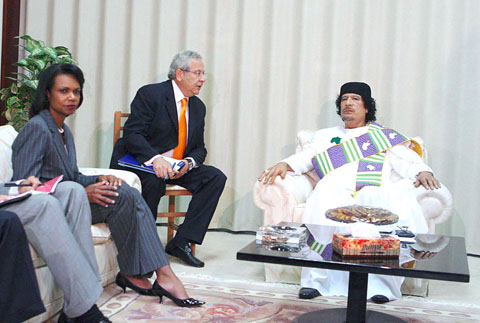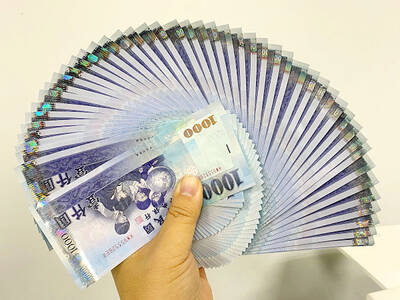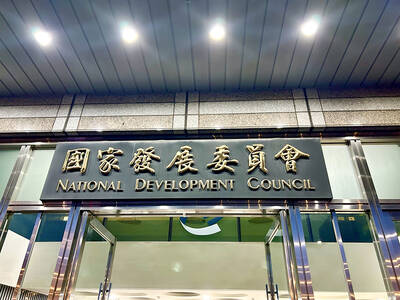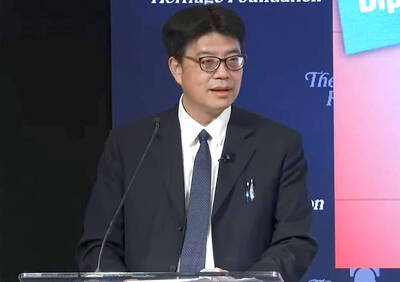The US and Libya sealed a historic turnaround after decades of terrorist killings, US retaliation, suspicion and insults with US Secretary of State Condoleezza Rice’s peacemaking visit with Muammar Qaddafi, Libya’s mercurial strongman.
“The relationship has been moving in a good direction for a number of years now and I think tonight does mark a new phase,” Rice said on Friday after a traditional Ramadan dinner — the evening meal that breaks the day’s fast during the Muslim holy month — at Qaddafi’s official Bab el-Azizia residence. It is the same compound hit by US airstrikes in 1986 in retaliation for a deadly Libyan-linked terrorist attack in Germany. The attack killed Qaddafi’s baby daughter.
“We did talk about learning from the lessons of the past,” Rice said. “We talked about the importance of moving forward. The United States, I’ve said many times, doesn’t have any permanent enemies.”

PHOTO: EPA
Rice is the highest-ranking US official to visit Libya in a half-century. The US considers Qaddafi rehabilitated since the days when former US President Ronald Reagan called him the “mad dog of the Middle East,” because of the Libyan’s surprise decision in 2003 to renounce terrorism and give up weapons of mass destruction. His government has also agreed to resolve legal claims from the bombing of Pan Am Flight 103 and other alleged terror attacks that bore Libyan fingerprints.
“Libya has changed, America has changed, the world has changed,” Foreign Minister Abdel-Rahman Shalgam said after a meeting with Rice. “Forget the past.”
Qaddafi welcomed Rice in a room redolent of incense. Wearing flowing white robes, his trademark fez and a green pin of Africa, Qaddafi bowed slightly and put his right hand over his heart in a traditional Arab greeting. The two did not shake hands, but Qaddafi did shake the hands of Rice’s male aides.
“We’re off to a good start,” Rice said later. “It is only a start, but I think, after many, many years, it’s a very good thing that the United States and Libya are establishing a way forward.”
The US withdrew its ambassador from Libya in 1972 after Qaddafi renounced agreements with the West and vilified the US in speeches and public statements. Washington cut off diplomatic relations with Libya after a mob sacked and burned the US embassy in 1979.
Qaddafi is known for often unpredictable behavior and has cultivated images as both an Arab potentate and African monarch since taking power in a 1969 coup. In a televised address to the nation this week he said he considers the US neither a friend nor an enemy.
Rice is the first US secretary of state to visit Libya since John Foster Dulles in 1953 and the highest-ranking US official to visit since then-US vice president Richard Nixon in 1957.
Libya has agreed to pay compensation to the families of victims of the 1988 Pan Am bombing over Lockerbie, Scotland, and those of a 1986 attack on a disco in Berlin. The disco attack killed two US servicemen and drew Reagan’s order to attack Libyan targets, including Qaddafi ‘s residence.
Rice was spending only a few hours in Tripoli, an ancient city fronting the Mediterranean Sea and backing to the North African desert, but took time to visit the offices that serve as the US embassy in Libya.
Plans to send a full-fledged ambassador and build a new embassy are hung up in US congress over concern that Libya has not fulfilled its promises to compensate terror victims.

Taiwan is projected to lose a working-age population of about 6.67 million people in two waves of retirement in the coming years, as the nation confronts accelerating demographic decline and a shortage of younger workers to take their place, the Ministry of the Interior said. Taiwan experienced its largest baby boom between 1958 and 1966, when the population grew by 3.78 million, followed by a second surge of 2.89 million between 1976 and 1982, ministry data showed. In 2023, the first of those baby boom generations — those born in the late 1950s and early 1960s — began to enter retirement, triggering

ECONOMIC BOOST: Should the more than 23 million people eligible for the NT$10,000 handouts spend them the same way as in 2023, GDP could rise 0.5 percent, an official said Universal cash handouts of NT$10,000 (US$330) are to be disbursed late next month at the earliest — including to permanent residents and foreign residents married to Taiwanese — pending legislative approval, the Ministry of Finance said yesterday. The Executive Yuan yesterday approved the Special Act for Strengthening Economic, Social and National Security Resilience in Response to International Circumstances (因應國際情勢強化經濟社會及民生國安韌性特別條例). The NT$550 billion special budget includes NT$236 billion for the cash handouts, plus an additional NT$20 billion set aside as reserve funds, expected to be used to support industries. Handouts might begin one month after the bill is promulgated and would be completed within

The National Development Council (NDC) yesterday unveiled details of new regulations that ease restrictions on foreigners working or living in Taiwan, as part of a bid to attract skilled workers from abroad. The regulations, which could go into effect in the first quarter of next year, stem from amendments to the Act for the Recruitment and Employment of Foreign Professionals (外國專業人才延攬及僱用法) passed by lawmakers on Aug. 29. Students categorized as “overseas compatriots” would be allowed to stay and work in Taiwan in the two years after their graduation without obtaining additional permits, doing away with the evaluation process that is currently required,

IMPORTANT BACKER: China seeks to expel US influence from the Indo-Pacific region and supplant Washington as the global leader, MAC Minister Chiu Chui-cheng said China is preparing for war to seize Taiwan, Mainland Affairs Council (MAC) Minister Chiu Chui-cheng (邱垂正) said in Washington on Friday, warning that Taiwan’s fall would trigger a regional “domino effect” endangering US security. In a speech titled “Maintaining the Peaceful and Stable Status Quo Across the Taiwan Strait is in Line with the Shared Interests of Taiwan and the United States,” Chiu said Taiwan’s strategic importance is “closely tied” to US interests. Geopolitically, Taiwan sits in a “core position” in the first island chain — an arc stretching from Japan, through Taiwan and the Philippines, to Borneo, which is shared by